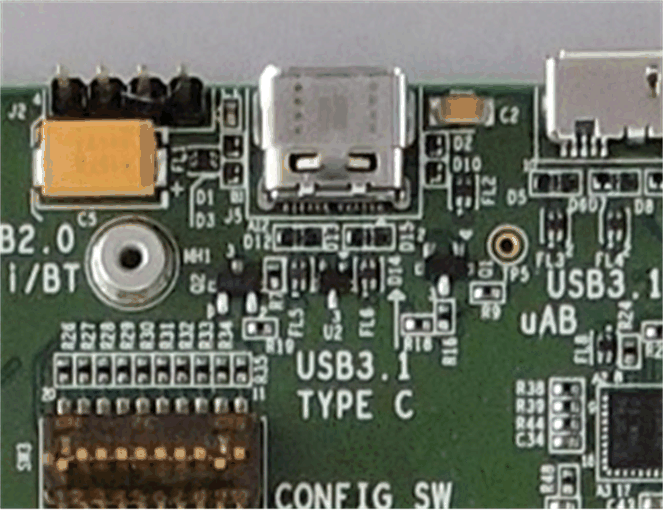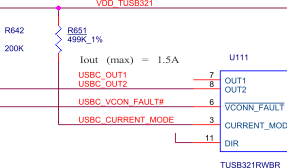SPRUIS4E March 2022 – January 2024
- 1
- Jacinto7 J721E/DRA829/TDA4VM Evaluation Module (EVM)
- Trademarks
- 1Introduction
- 2J721E EVM Overview
- 3EVM User Setup/Configuration
-
4J721E EVM Hardware Architecture
- 4.1 J721E EVM Hardware Top level Diagram
- 4.2 J721E EVM Interface Mapping
- 4.3 I2C Address Mapping
- 4.4 GPIO Mapping
- 4.5 Power Supply
- 4.6 Reset
- 4.7 Clock
- 4.8 Memory Interfaces
- 4.9 MCU Ethernet Interface
- 4.10 QSGMII Ethernet Interface
- 4.11 PCIe Interface
- 4.12 USB Interface
- 4.13 CAN Interface
- 4.14 FPD Interface (Audio Deserializer)
- 4.15 FPD Panel Interface (DSI Video Serializer)
- 4.16 Display Serial Interface (DSI) FPC
- 4.17 Audio Interface
- 4.18 Display Port Interface
- 4.19 MLB Interface
- 4.20 I3C Interface
- 4.21 ADC Interface
- 4.22 RTC Interface
- 4.23 Apple Authentication Header
- 4.24 EVM Expansion Connectors
- 4.25 ENET Expansion Connector
- 4.26 CSI Expansion Connector
- 5Revision History
4.12.1 USB 3.1 Interface
USB Super speed signals from SERDES3 port of J7E21E SoC are connected to USB Type C connector (2012670005). A CC and PD controller Mfr. Part# TUSB321RWBR and PTPS25830QWRHBTQ1 are used for CC detect and power delivery. This CC controller supports Dual Role Port (DRP), Downstream Facing Port (DFP) and Upstream Facing Port (UFP) modes, In CP board DRP, DFP and UFP modes can be selected through an EVM Configuration dip switch (SW3). The Dip switch settings are given in Table 3-5Table 6.
 Figure 4-26 USB3.1 Type C Interface
Figure 4-26 USB3.1 Type C InterfaceThe AC coupling capacitors are provided on TX lines of Super speed signals, and common mode filters (MCZ1210DH900L2TA0G) are used at all the differential pairs. ESD protection diodes are provided on all required USB Signals (TPD1E05U06DPY for super speed signals and TPD2E2U06-Q1 for CC pins). TUSB321‘s Current Mode pin is pulled high through 499K resistor to set the Maximum Current Iout to 1.5A.
 Figure 4-27 Type C Power Delivery Current Settings
Figure 4-27 Type C Power Delivery Current SettingsThe control signals for Powerdown and VBUS enable are given from I2C GPIO Expander2 (I2C add: 0x22 - P03) and the SoC DRVVBUS, respectively.